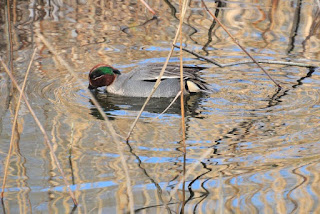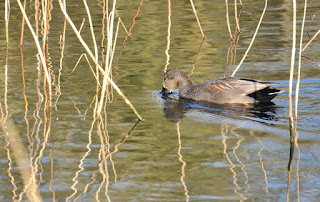Have you taken part in this year's
Big Butterfly Count yet?
Take 15 minutes to sit or walk in the location of your choice, and count the butterflies you see. Repeat as often as you wish, until the 11th of August, and send your sightings to the
Big Butterfly Count site to be added to the many, many others gathered from all over the UK, and add to data accumulated over the last decade or so.
I've submitted my lists for a few dates so far this year - my garden, in a village on the edge of arable farmland, has so far yielded half a dozen or so butterflies in a 15 minute slot - Holly Blue, Large White, Small White, Gatekeeper, Meadow Brown, Peacock, Red Admiral, and one solo Brimstone. So, not great numbers, but not too bad on species count.
But contrast this with a trip I took a couple of weeks ago, to the
National Trust's Wimpole Estate. I'd seen on social media that someone had taken some nice photos of the Marbled White, a butterfly I'd never seen before, and as Wimpole is only a 20 minute drive away I thought I'd pick a nice warm afternoon and go looking. I was not disappointed!
I found my Marbled White within minutes - and not just one, but half a dozen or so, along with Meadow Browns, Gatekeepers and Skippers too numerous to count (I didn't try!). It was actually a little overwhelming; certainly the highest density of butterflies I've ever seen. In fact, it reminded me of a couple of things I'd recently read...
The Country Diary of an Edwardian Lady by
Edith Holden (1906) is a favourite of mine, and probably, ultimately, the inspiration for my own scribblings and sketching. On July 21st 1906 she wrote: "Along a lane just above Balsall, I came suddenly upon a great flock of Meadow Brown Butterflies; I had seen numbers of them all along the way, but here the air was thick with them, flying hither and thither..."
And in an article titled 'Habitat fragmentation and the New Forest' in
British Wildlife, Chatters and McGuire say: "To the modern naturalist, historical descriptions of butterflies in the Forest are astonishing. ... In 1892, S.J. Castle Russell described the butterflies at Ramnor as being 'so thick that I could hardly see ahead and indeed resembled a fall of brown leaves'."
I'm guessing that the parkland at Wimpole Estate must reflect the shocking 97% of
meadows that have been lost since the 1930s; a glimpse of how things used to be in much of the countryside. All of which reminded me of something else I read recently:
George Monbiot on selective blindness and shifting baseline syndrome. He says:
The people of each generation perceive the state of the ecosystems they
encountered in their childhood as normal and natural. When wildlife is
depleted, we might notice the loss, but we are unaware that the baseline
by which we judge the decline is in fact a state of extreme depletion.
I, like many others of my age, remember the huge amounts of flying insects in the summer that plastered the front of the car on long journeys. My Dad remembers the abundance of fish (mackerel) when he used to go sea fishing. I marvel at the half a dozen or so skylarks that sing in the local fields, and then can't help but wonder how many more there would have been, and how they might have sounded, a hundred years ago.
It can be hard to be optimistic in the face of such loss of habitat and decline in wildlife, but every little thing we can do all adds up to a greater sum of support for the wild world. So, make those changes, join that wildlife organisation, appreciate the wild we still have. As Jane Goodall has said:
Above all we must realize that each of us makes a difference with our
life. Each of us impacts the world around us every single day. We have a
choice to use the gift of our life to make the world a better place -
or not to bother.




















































